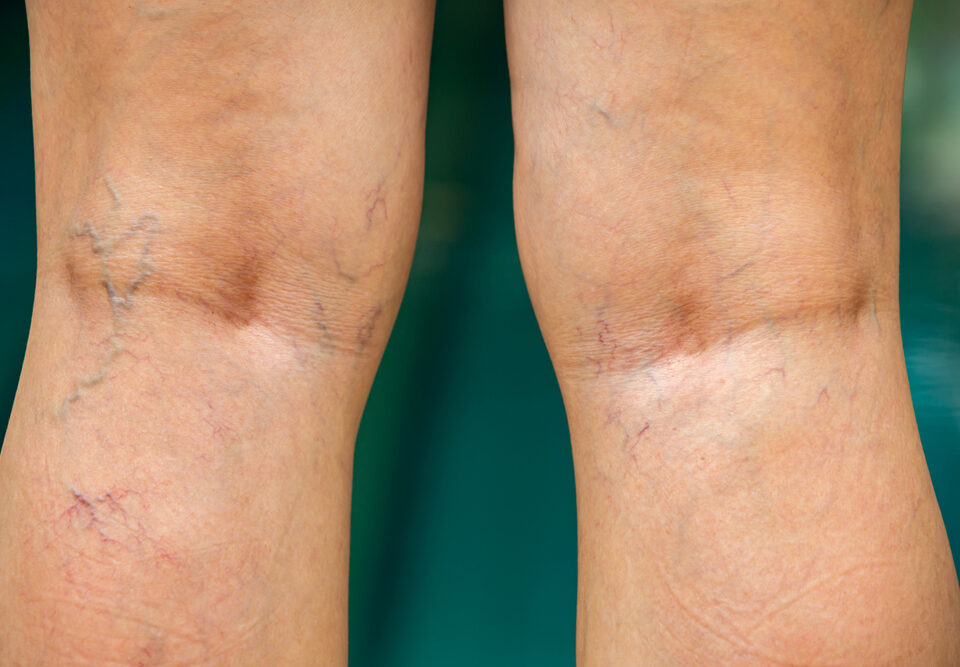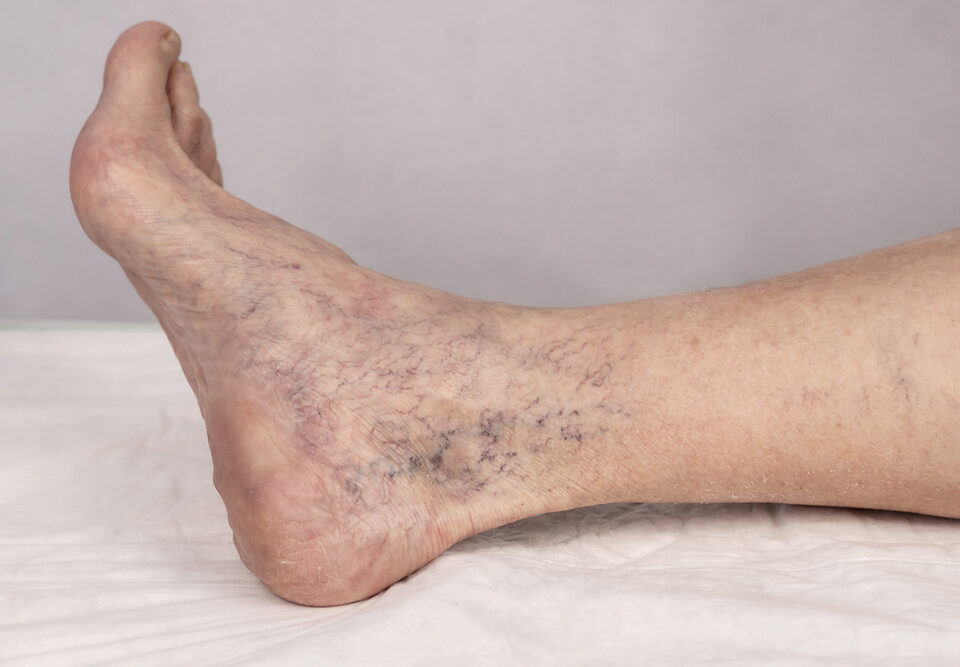Chronic venous insufficiency – also known as CVI – is a condition that occurs when valves in blood veins in the leg lose their effectiveness, or the venous wall becomes weak. This condition makes it difficult for blood to move from the legs back up through the body to the heart. It also results in what is known as statis, causing blood to pool and collect in the veins, unable to be carried back up the body.
To reach the heart, blood needs to flow upward from veins in the legs. Muscles in the calves and feet contract with the steps you take to squeeze blood back up the length of your legs into the torso, where more muscles push it further into the heart. To keep the flow going in the direction it needs to, the veins contain one-way valves. CVI uccurs when these valves become damage, causing blood to leak backwards down the legs towards the feet. This damage can occur as a natural result of aging, reduced mobility, or constant extended periods of sitting or standing. When the veins and valves are weakened enough, blood pressure in the legs stays elevated for long periods of time.
CVI often develops as a result of deep vein thrombosis (DVT), a disease that causes blood clots to develop in the deep veins of the legs. CVI that develops in this manner is known as post-thrombotic syndrome, and as many as thirty percent of people will develop the problem after their DVT diagnosis. CVI can also develop as a side effect of vascular malformations and pelvic tumors. The failure of the leg veins to hold blood against gravity leads to blood moving sluggishly out of the leg veins, causing the afflicted person’s legs to swell.
Symptoms of Chronic Venous Insufficiency
As the disease progresses, the seriousness of CVI as well as the complexities of treating it increase. If you see any of the symptoms of CVI, it’s important to see your doctor right away. The problem is one not solved by waiting, and the earlier is it diagnosed, the better your chances will be of avoiding serious complications with treatment. Signs and symptoms include:
- Aches or tiredness in the legs
- Varicose veins
- Skin on your legs taking on a leathery-like appearance
- Skin on your legs or feet itching constantly, or peeling and flaking
- Stasis ulcers
If not treated, CVI will cause pressure and swelling in your legs to increase until even the tiniest blood vessels in the legs (capillaries) can’t take it and burst. In the event of that happening, the skin overlying them takes on a reddish-brown color, and can be broken easily if bumped or scratched. Tissue inflammation and internal damage will occur around the burst capillaries. Worst case scenario, this will lead to open sores on the surface of the skin. These ulcers can become infected, which can spread to surrounding tissue and cause cellulitis.
Diagnosis and Treatment of Chronic Venous Insufficiency
Diagnosing CVI requires a leg examination to differentiate it from other similar conditions. Doctors use a test called a vascular ultrasound, which emits sound waves that bounce off veins and records them to create an image of the blood vessels.
Like any disease, the early stages is when CVI is at its most treatable. Basic treatment strategies include avoiding long periods of standing or sitting, regular exercise such as walking, losing weight, taking antibiotics as needed to treat skin infections and practicing good skin hygiene to prevent the development of ulcers. Compression stockings are another good approach – these squeeze the legs so the muscles in them don’t have to work as hard to push blood back up into the torso to keep blood from pooling. They’re made in various styles and compression strengths, and can be purchased from most pharmacies.
Chronic Venous Insufficiency (CVI)
Chronic Venous Insufficiency (CVI) Chronic venous insufficiency (CVI) is when the veins continually have difficulty sending blood from the limbs back to the heart. Veins are the vessels that carry oxygen-poor blood back to the heart – whereas arteries carry oxygen-rich blood from the heart to the rest of the body. Problems with the arteries … Continue reading



 Premier Vein & Vascular
Premier Vein & Vascular

